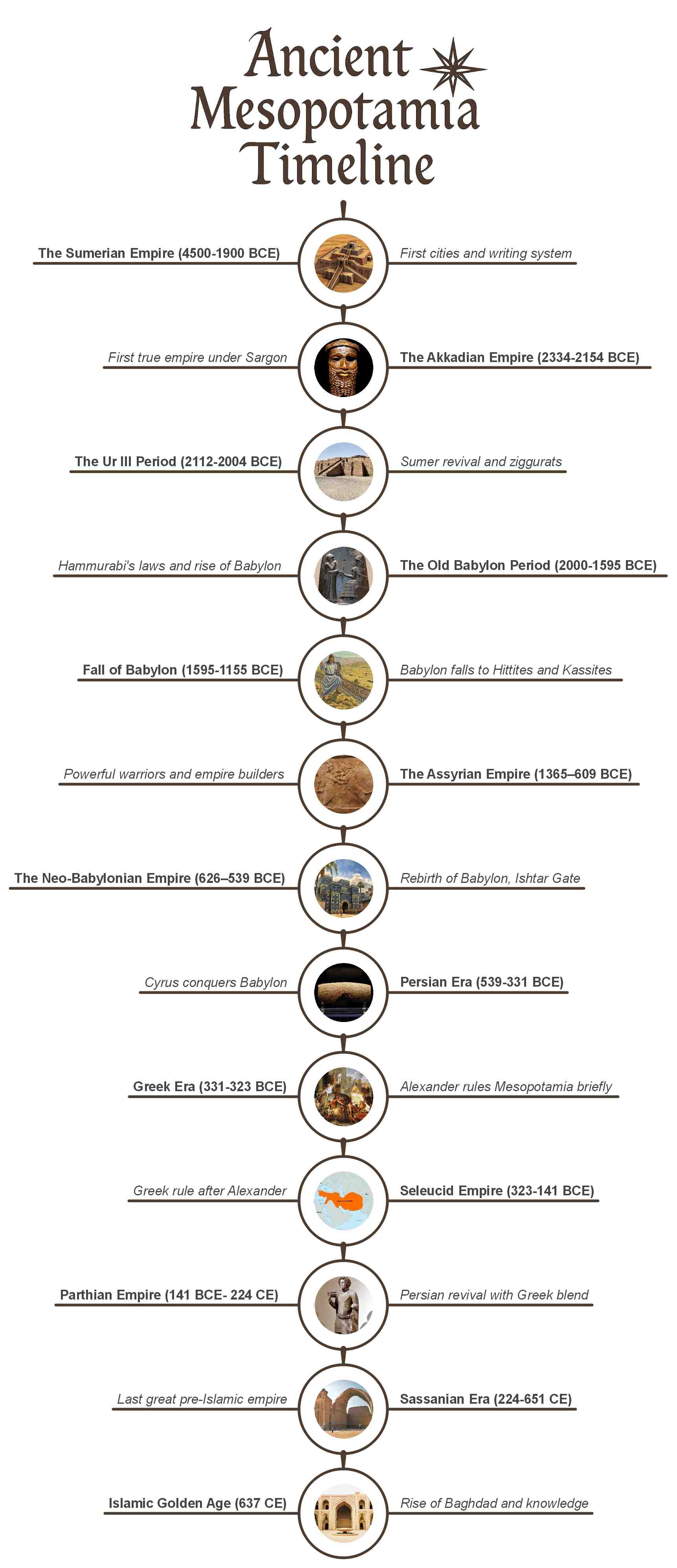Modern-day Iraq, Turkey, and Syria were once known as the birthplace of civilization. Mesopotamia was the region between the Euphrates and Tigris Rivers. This place had rich soil, making it great for farming. It was also perfect for trading with nearby areas. So, it’s not surprising that many invaders came to Mesopotamia in hopes of reaping these benefits.
Ancient Mesopotamia saw the rise and fall of many empires. Although each invasion left its mark on the land, the people of Mesopotamia created a lasting legacy. They shared knowledge, innovation, and a vibrant culture.
Over time, Mesopotamia brought together many cultures, languages, and beliefs. This unique mix helped shape future civilizations. In this article, we will dive deep into this ancient Mesopotamia timeline, tracing back the history.
In this article
Part 1: The Mesopotamian Civilization Timeline
Ancient Mesopotamia witnessed many eras over three thousand years. Each period brought new ideas in agriculture, writing systems, and textiles. The people of Mesopotamia transformed how humans lived with their knowledge and inventions.
Although ancient Mesopotamia has an exciting history. Keeping track of the different empires that ruled the region can be challenging. But don't worry, because I have created a detailed timeline to help you on this historical journey.
The Sumerian Empire (4500-1900 BCE)
The history of ancient Mesopotamia starts with the Sumerian civilization. Sumerians migrated to this region around 5000 years ago. They learned how to use water for agriculture and created prosperous cities. The Sumerians also built ships that helped them trade with other civilizations like the Harappans.
The Akkadian Empire (2334-2154 BCE)
There was a city in northern Mesopotamia known as Akkad. Around 2334 BCE, Sagron of Akkad grew b. He set up his own government. The Empire ruled over both Sumerians and Akkadians for 180 years.
The Ur III Period (2112-2004 BCE)
The Sumerians rose to power again under the rule of their king, Ur-Nammu. This era is also called the Sumerian Renaissance and lasted 100 years. This time saw advances in irrigation and food production methods.
The Old Babylonian Period (2000-1595 BCE)
When the Akkadian Empire fell, Mesopotamia split. The northern part became Assyria, and the southern part became Babylon. The Babylonian government was ruled by the famous king Hammurabi. He created the "Code of Hammurabi." It is the first legal framework for governance and justice.
Fall of Babylon (1595-1155 BCE)
After King Hammurabi died, Babylon split into groups of different ethnicities. That's when a tribe called the Hittites attacked from the north and ended the government there. But the Hittites were outnumbered compared to the size of Mesopotamia. So, in the same century, another tribe called the Kassites established their rule. They even changed Babylon's name to Karduniaš.
The Assyrian Empire (1365–609 BCE)
A tribe that maintained its reign in the north was the Assyrians. Assyria stood b even as other empires in Babylon rose and fell. In the 8th Century BC, Ashur Banipa was a b Assyrian king. He conquered many areas near Assyria. Although their government was b, it was eventually overthrown by the Medes.
The Neo-Babylonian Empire (626–539 BCE)
When the Assyrian Empire fell, a union of the Median state was built in Iran. At the same time, a Chaldean state was formed in the south. The Chaldean Empire grew strong and started a new era led by the Neo-Babylonians. Under King Nebuchadnezzar II, the Babylonians gained independence. They also expanded their rule into nearby regions.
Persian Era (539-331 BCE)
Cyrus the Great, around 500 B.C., founded the Persian Empire. Unlike other invaders, Cyrus entered Mesopotamia without fighting. He allowed the people to practice their customs, religions, and traditions freely. During the Persian Era, Mesopotamia expanded from the Mediterranean to India. It was one of the best periods for the region in terms of trade and agriculture.
Greek Era (331-323 BCE)
When Alexander the Great conquered Babylon in 331 BCE, it brought an end to the Persian Empire. He followed in the footsteps of Cyrus the Great and respected the land's traditions. However, his rule was short-lived as he died in 323 BCE.
Seleucid Empire (323-141 BCE)
With Alexander gone, his generals fought to claim Mesopotamia as their own. One of them was Seleucus I Nicator, who took control of the eastern part of the empire. He established the Seleucid Empire, but it wasn't without challenges. With the Parthians in the east and the Romans in the west, ruling Mesopotamia was not easy.
Parthian Empire (141 BCE- 224 CE)
The Parthians rose from the northeast regions of Mesopotamia and defeated the Seleucids. They seized control of Babylonia and expanded their rule in the west. The Parthians, like past rulers, left local customs and traditions alone. However, internal strife and Roman conflicts brought an end to the 400-year-long empire.
Sassanian Era (224-651 CE)
In 224 CE, Ardashir I founded the Sassanian Empire after defeating the Parthian king. The Sassanians claimed they would revive the glory of the ancient Persian era. As a result, the rulers invested heavily in agriculture and architecture. However, over the next 400 years, the government gradually weakened. When Arab Muslims arrived in Mesopotamia, the empire was too weak to fight back.
Islamic Golden Age (637 CE)
The Islamic Golden Age lasted from the 8th to the 13th century. It began under the rule of the Abbasid caliph Harun al-Rashid. During this time, Baghdad was home to the famous House of Wisdom. Scholars from around the world gathered here to translate key texts into Arabic. Baghdad, Cairo, and Cordoba became important centers for science, philosophy, medicine, and education.
The Islamic Golden Age came to an end in 1258, when the Mongols invaded and destroyed Baghdad.
Part 2: How to Create Such a Timeline using EdrawMind?
Interested in drawing a timeline like the one above? EdrawMind is a useful tool that allows users to create diagrams. The software has pre-built templates that make drawing simple, even for beginners. But if you want to build a timeline from scratch, EdrawMind has great customization features to help you.
All you need to do is download the software or launch EdrawMind online on your browser. Then follow the easy steps below to create a custom timeline.
Step 1: Start with a blank canvas
- Use your Wondershare account to log in. But if you don't have one, use your socials to sign into the app.
- Select Create from the left panel of your home screen.
- Choose Local Mindmap from the Blank Document menu.
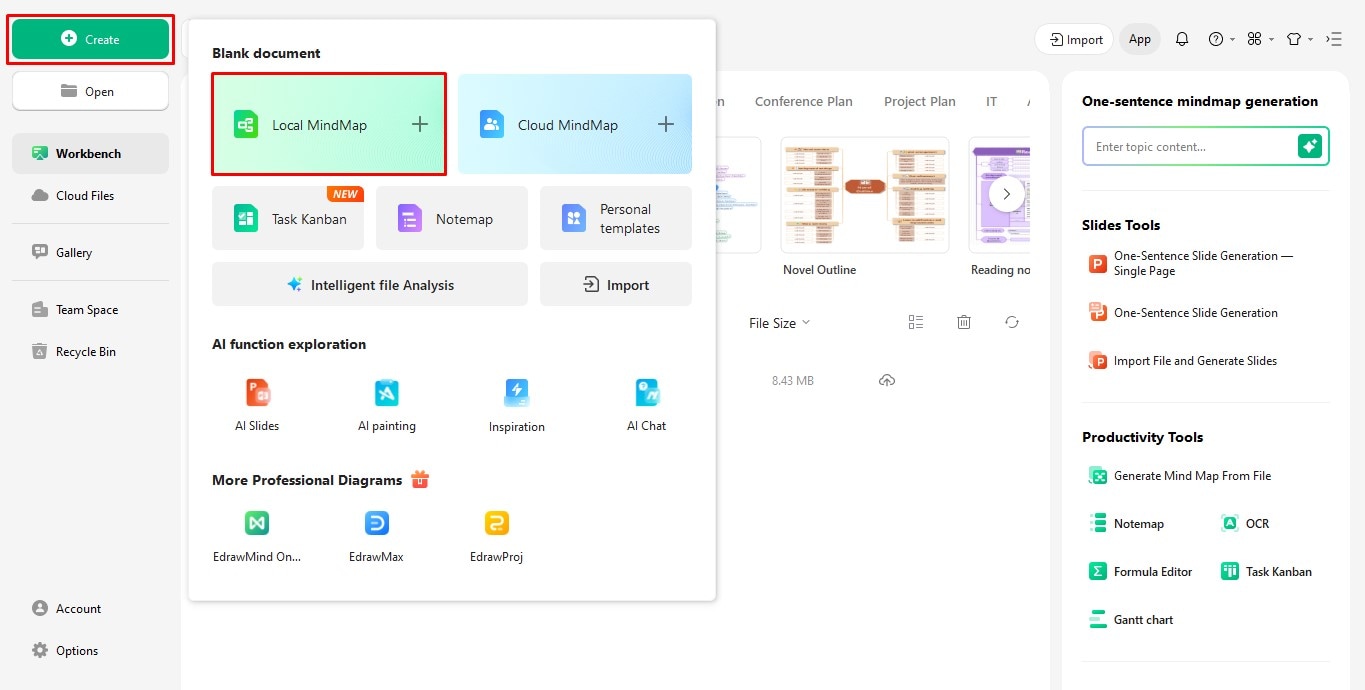
Step 2: Change the timeline layout
- I have made the timeline using a different layout. So, click on the Main Idea to reveal timeline options.
- Select Layout for more timeline structures.
- Choose the Down timeline option.
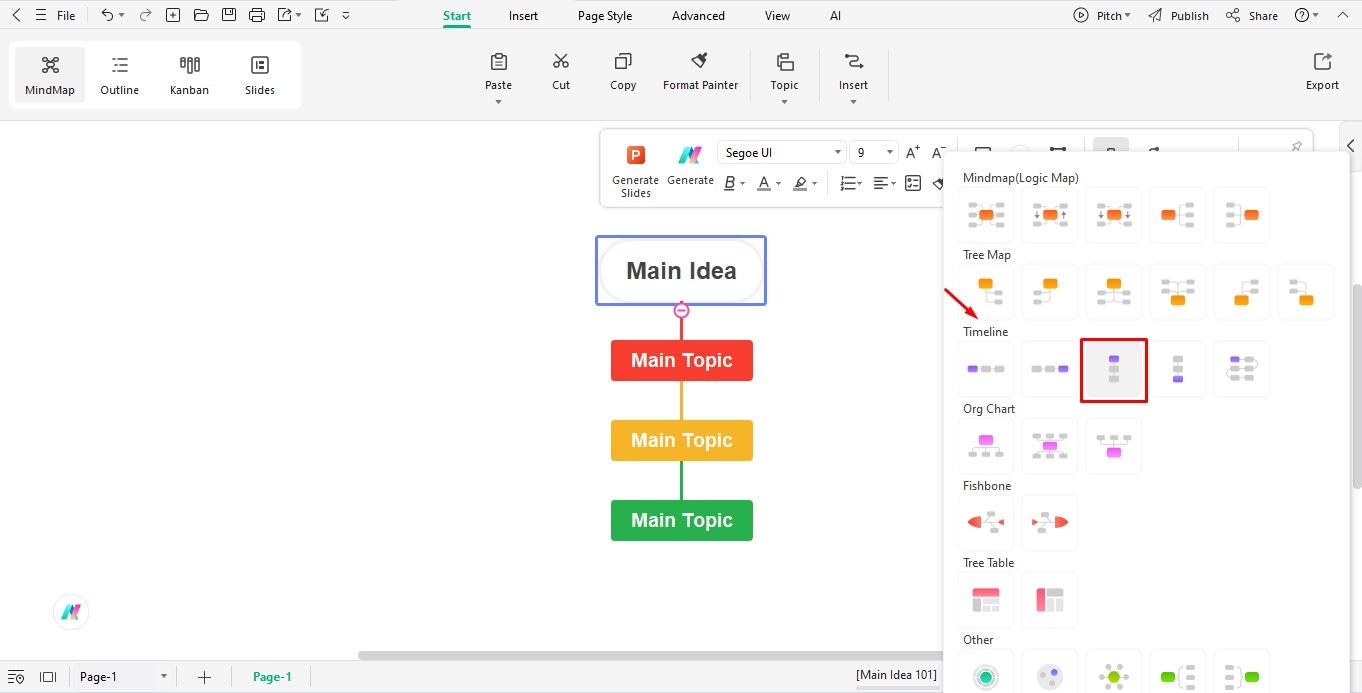
Step 3: Insert image as heading
- Images can give your timeline a more professional look, so let's use one as our heading.
- Click on Main Idea and remove the text inside the box.
- Navigate to Insert on the top editing panel and select Picture.
- Upload the image you want to use as the heading.
- Move towards the Style panel on the left.
- Uncheck Fill Color and Shadow to remove the outline around the image.
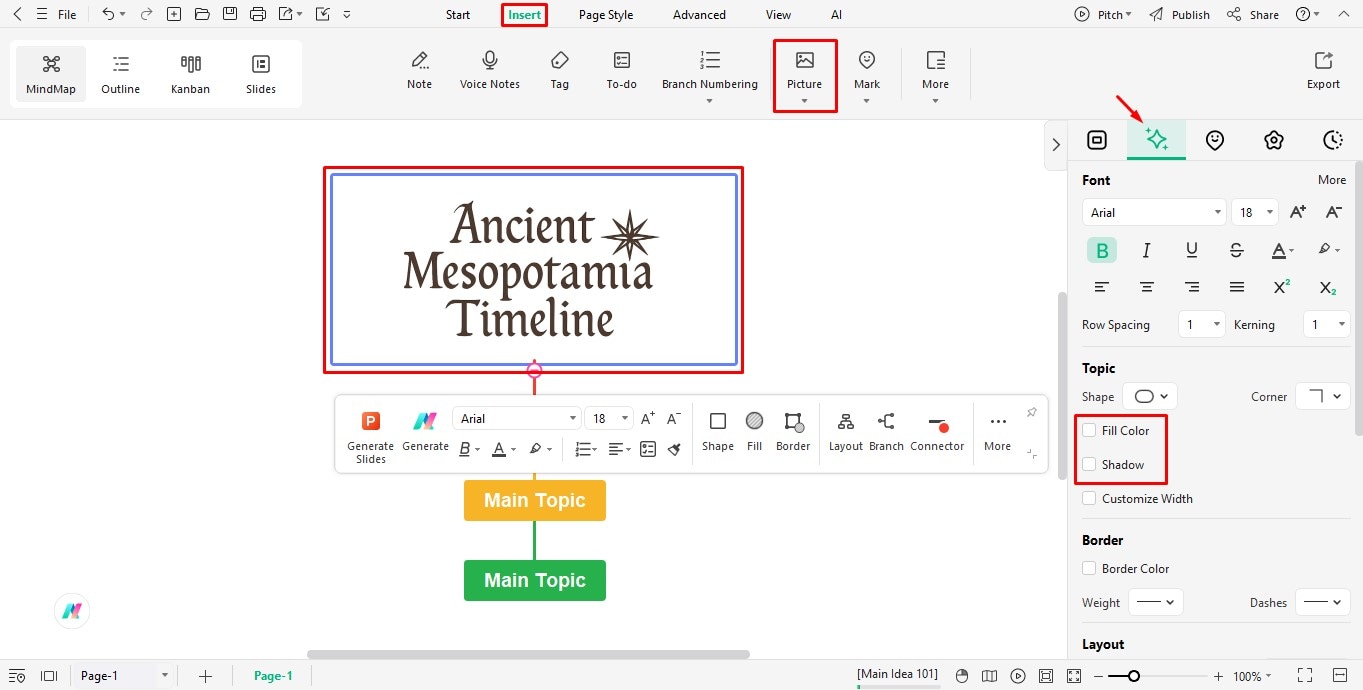
Step 4: Edit the main topic
- Select the Main Topic and remove the text inside.
- From the right editing panel, change the Shape of the Main Topic as shown in the image below.
- Select a Border Color and Weight from the same panel according to the timeline's theme.
- Now, follow the steps: Insert > Picture to add an image in the center.
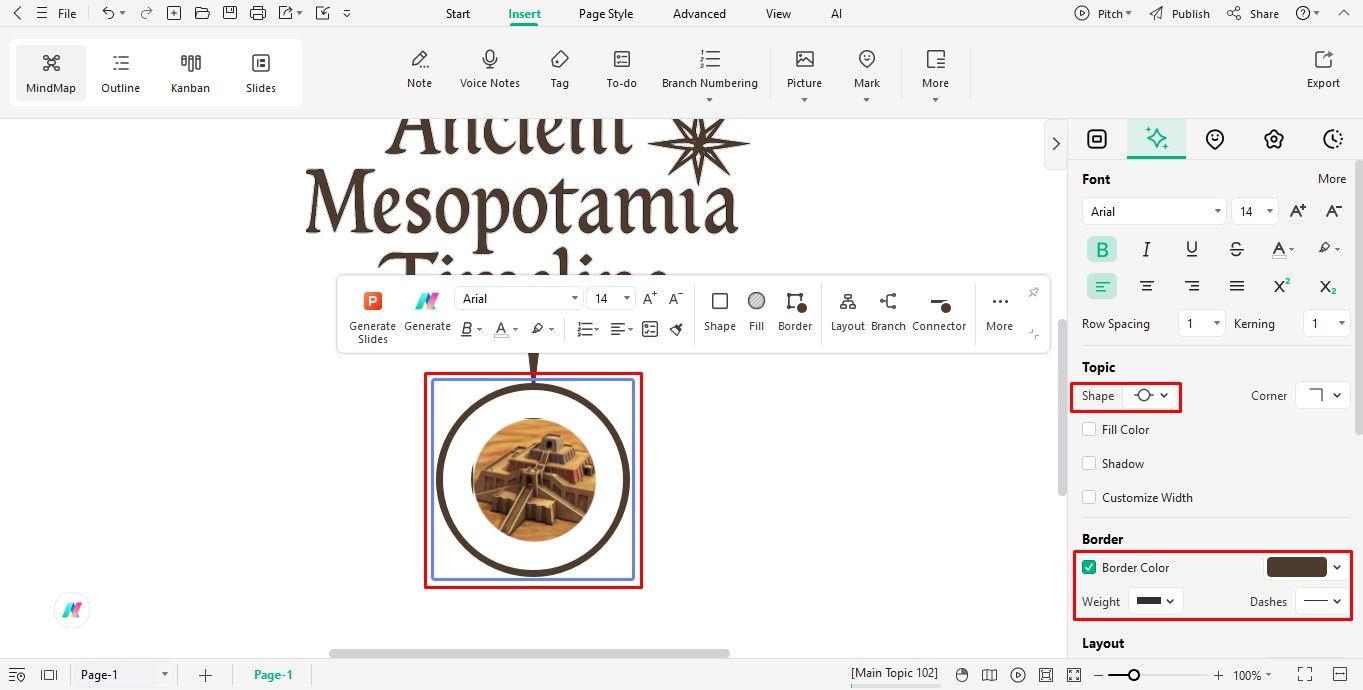
Bonus step: Change the image shape
- You can change the default image shape of EdrawMind in EdrawMax.
- Simply, upload the image on EdrawMax's blank canvas and click to reveal editing options.
- Select Crop to Shape from the menu and choose another shape.
- Finally, copy the cropped picture from EdrawMax and paste it back into EdrawMind.
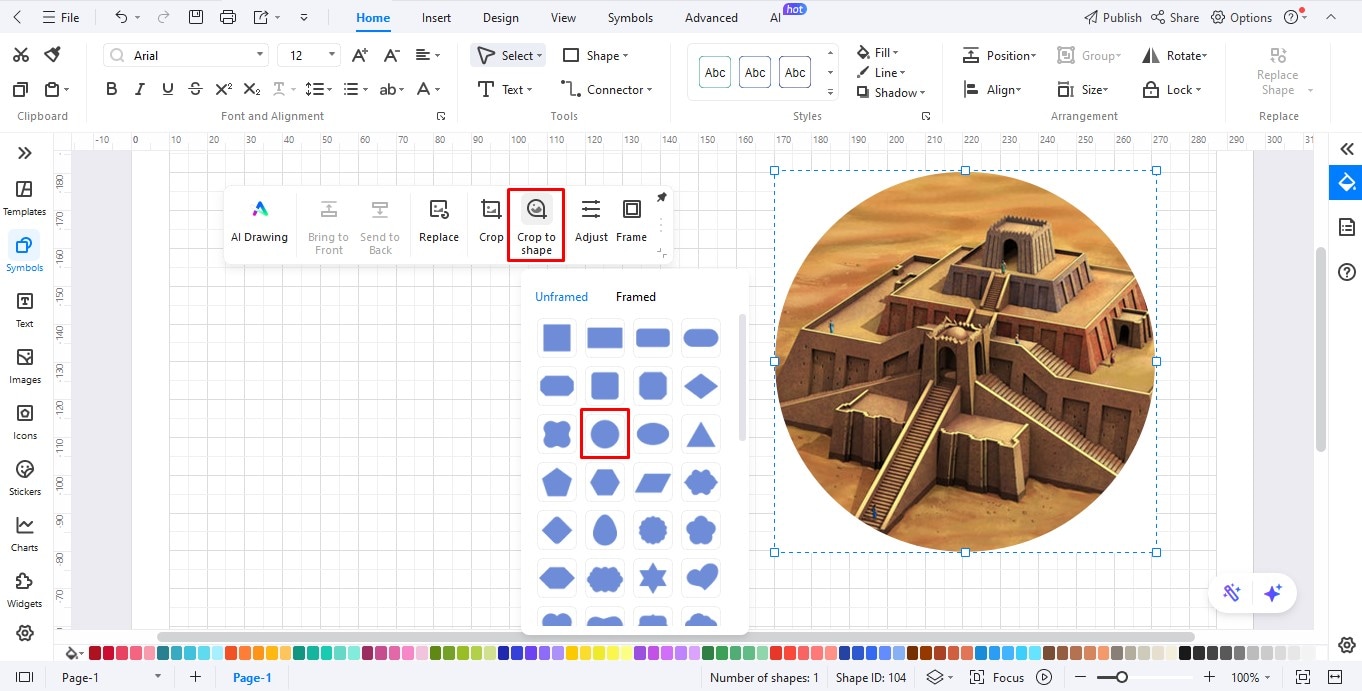
Step 5: Change layout structure
- You need to change the structure of the Main Idea to create the above timeline.
- Click Main Idea and then locate Layout on the left editing panel.
- Choose the third structure from the options.
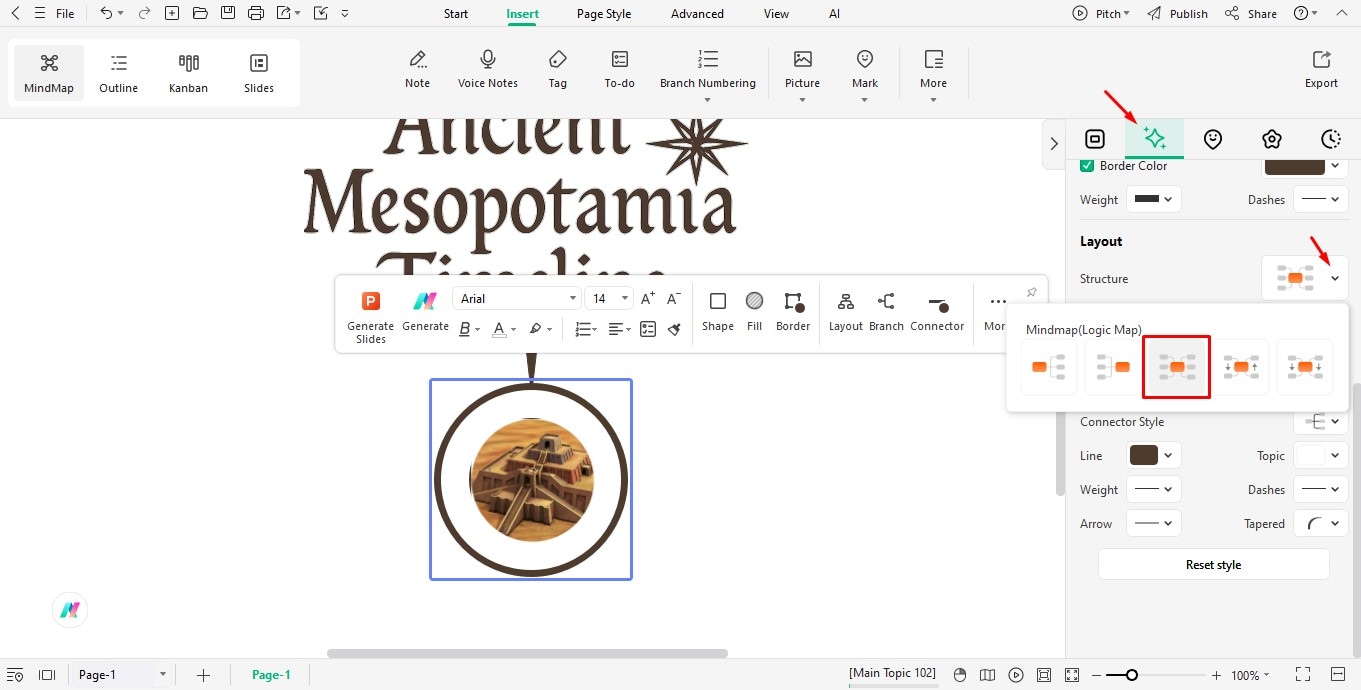
Step 6: Add subtopics
- Now, start adding subtopics to the Main Idea.
- Press the Tab button twice and position a subtopic on either side of the Main Idea.
- Insert era names and duration on the left and highlights on the right.
- One by one, select each text box and change its Shape as shown in the image below.
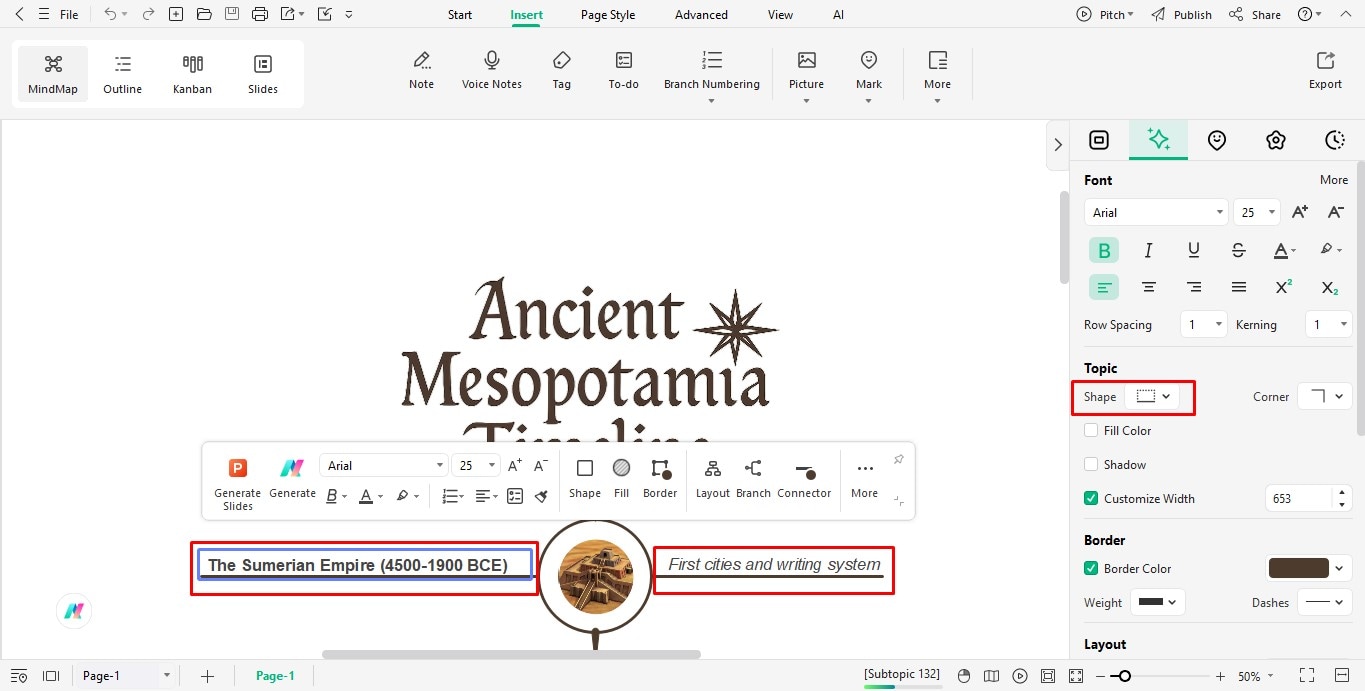
Step 7: Export Timeline Image
- Press Enter to add more Main Topics.
- Insert the remaining dates and events into the timeline.
- Once it's complete, download it by clicking File in the top-left corner of the toolbar.
- If you want to download the file in EdrawMind's default format, select Save.
- If you want to save the file in other formats like JPG, Word, PPT, HTML, TXT, PDF, PNG, select Export from the same menu.
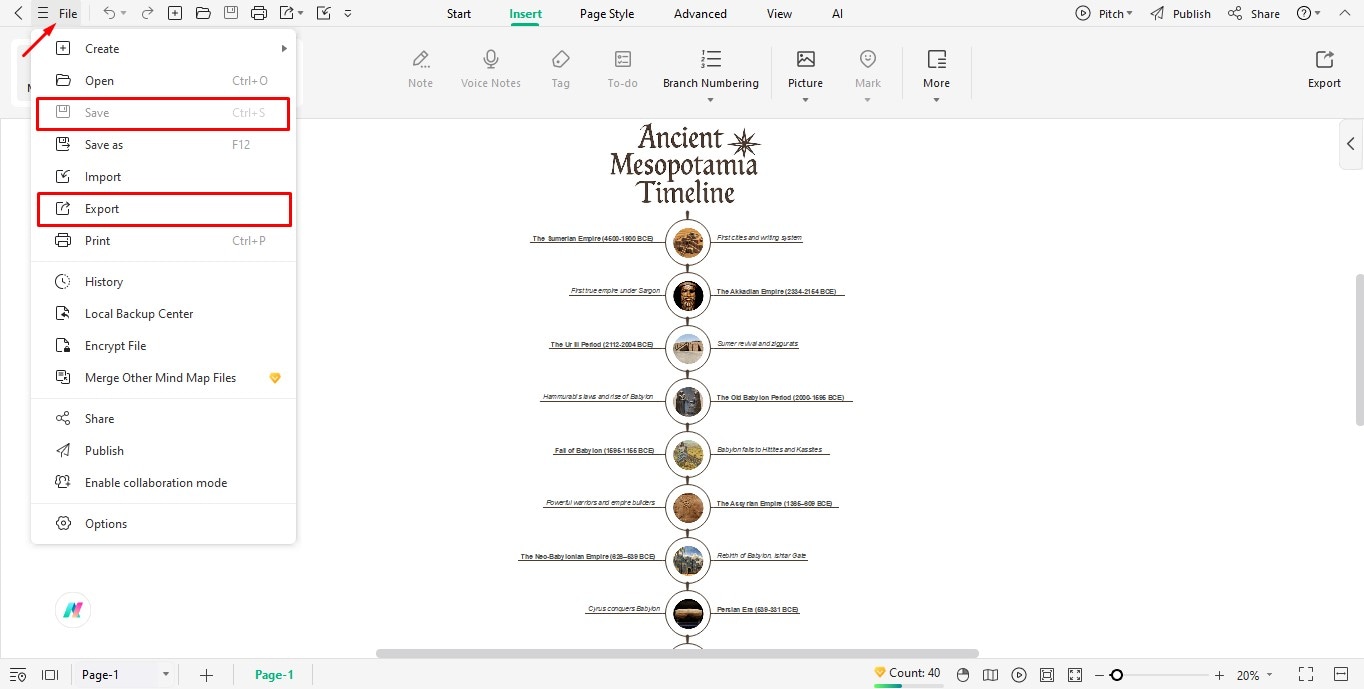
Final Words
Ancient Mesopotamia's history and culture are key to today's Iraq, Turkey, and Syria. From the first cities in Sumer to the invasion of Baghdad, each period has shaped the region. Ancient Mesopotamia was more than the Cradle of Civilization. It changed how the world saw writing, law, and science.
If you enjoy learning about ancient civilizations, create their historical timeline with EdrawMind. The tool is perfect for beginners and doesn't require any prior design knowledge to get started. Try it today for effortless, yet professional-looking diagrams.



